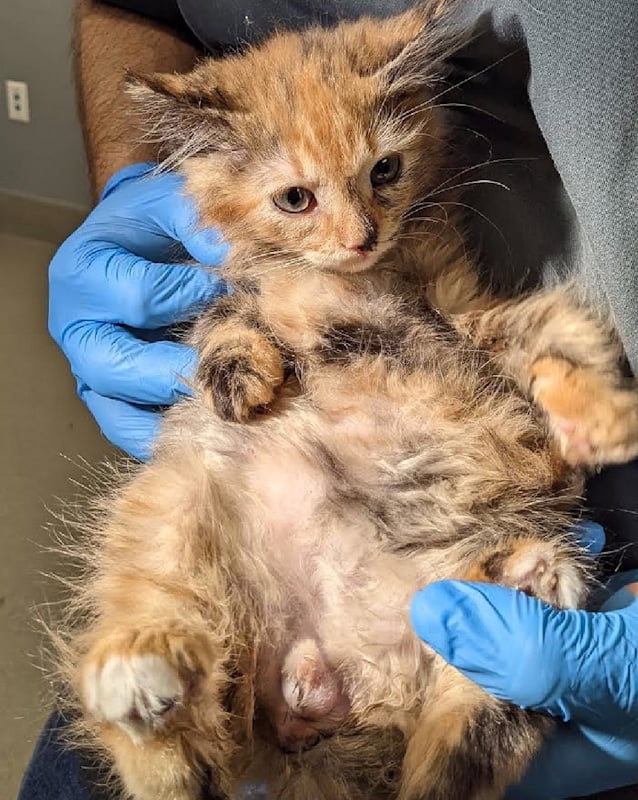The unicorn of cats, so called, is a male tortoiseshell domestic cat. The title has been awarded because they are so rare. My research, years ago, indicated that about one in 3000 tortoiseshell cats are males. Dr. Desmond Morris in his book Cat World says that they are less rare at one in 200. I favour my earlier research which comes from a book on feline genetics. The topic is current because a sweet-looking male tortoiseshell kitten is currently at The Animal Foundation, a shelter in Las Vegas. He’s been given the name ‘Comet’ and, as expected, he is attracting a lot of attention.

RELATED: Putin’s troops force disabled woman in wheelchair clutching tortoiseshell cat to flee her home
It’s almost impossible to describe why male tortoiseshell cats are so rare because genetics are complicated! It is all to do with sex-linked genes but I will have a go. The genes which control the inheritance of black patches of fur and red tabby patches are both carried on the X chromosomes; the red gene on one and the non-red gene on the other. Only females have 2 X chromosomes. Therefore, only females can display the red plus non-red tortoiseshell combination.
Males have one X chromosome and one small Y chromosome. On the single X chromosome, they carry either the red OR the non-red gene but they can’t have both. So, they are normally either all over red tabby all over black. My thanks to Dr. Morris that 😎.
Male tortoiseshell cats exist because of a “minor genetic error which causes the male cat to develop the genetic combination XXY”. The double X allows the male cat to be red and black while the Y chromosome gives the cat his male characteristics.
This is where it becomes particularly interesting because Dr. Desmond Morris states that although Comet is a male tortoiseshell cat and therefore very rare, it is likely that his “masculinity leaves a lot to be desired”. He will be sterile and his behaviour will be odd. I would love to hear from the shelter on his behaviour.
The zoologist describes male tortoiseshell cats as being “like a masculinised female rather than a true male”. He describes a male tortoiseshell cat that was observed in a colony of cats. He states that the cat being neither fully male nor fully female did not feel the urge to compete in “single-sex pecking-order disputes”. This resulted in the cat ignoring the usual battles between males or between females.
The male tortoiseshell cat did not spray urine at an age when they would normally do so and he did not attempt to mate with females on heat. The cat allowed young tom-cats to mount him and attempt to mate with him.
When adult this male tortoiseshell cat did not show any interest in females. When he mated with a few he did it without enthusiasm. When he sprayed urine to mark territory, he did it “in a desultory fashion.”
In short, the cat didn’t behave like a normal tomcat and lacked enthusiasm about being a male cat. Morris concludes that all tortoiseshell cats are feminine in character even if they are not all female.
Their rarity has helped to protect them throughout history. Superstition abounded. For example, in England there was a belief that when a male tortoiseshell cat rubbed their tail against a person with warts in the month of May, they would be cured of their skin infection. And Japanese fishermen would pay huge sums for a tortoiseshell cat to be employed as a ship’s cat in the expectation that he would protect the crew from the ghosts of their ancestors and from storms.
Below are some more pages on tortie cats.

